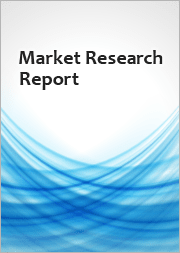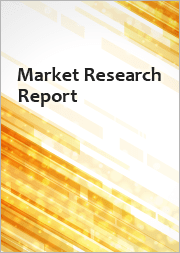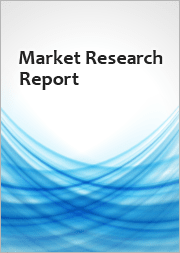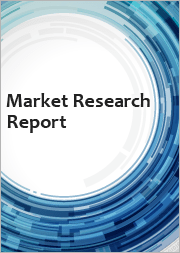
|
시장보고서
상품코드
1824024
GLP-1 RA 요법 시장 보고서 : 동향, 예측, 경쟁 분석(-2031년)GLP-1RA Therapy Market Report: Trends, Forecast and Competitive Analysis to 2031 |
||||||
세계 GLP-1RA 요법 시장의 잠재력은 병원, 클리닉 및 기타 시장에서의 기회로 인해 유망합니다. 세계 GLP-1 RA 요법 시장은 2025년부터 2031년까지 7.3%의 연평균 성장률을 보일 것으로 예상됩니다. 이 시장의 주요 촉진요인은 임상적 증거의 증가와 규제 당국의 승인 증가입니다.
- Lucintel의 예측에 따르면, 유형별로는 장시간 작용형 GLP-1RA가 예측 기간 동안 높은 성장세를 보일 것으로 예상됩니다.
- 용도별로는 병원이 가장 높은 성장이 예상됩니다.
- 지역별로는 아시아태평양이 예측 기간 동안 가장 높은 성장을 보일 것으로 예상됩니다.
GLP-1 RA 요법 시장의 새로운 동향
GLP-1RA 요법 시장은 당뇨병 관리와 비만 치료에 대한 전 세계적인 관심 증가를 반영하는 새로운 트렌드에 따라 빠르게 진화하고 있습니다. 이러한 추세는 GLP-1RA의 사용 방법, 판매 방법, 대사성 질환 치료의 광범위한 용도를 재구성하고 있습니다. 새로운 임상 적응증에서 기술 혁신에 이르기까지 GLP-1RA 시장은 큰 변화의 시기를 맞이하고 있습니다.
- 체중 감량에 대한 관심 증가 : 특히 비당뇨병 환자에서 체중 감량을 위한 GLP-1RA 요법의 사용은 가장 두드러진 추세 중 하나가 되고 있습니다. 웨고비(세마글루티드)와 같은 약물은 체중 조절을 목적으로 승인을 받았으며, 전 세계적으로 비만율이 증가함에 따라 시장 도입이 가속화되고 있습니다. GLP-1RA는 식욕을 감소시키고 포만감을 증가시켜 체중 감량을 위한 유망한 솔루션을 제공합니다. 이러한 추세는 GLP-1RA 시장을 당뇨병 치료뿐만 아니라 보다 광범위한 체중 관리로 확장시켜 비만 치료의 주요 도구로 자리매김하고 있습니다.
- 병용요법 : 또 다른 중요한 트렌드는 GLP-1RA와 SGLT2 억제제, 인슐린 제제 등 다른 당뇨병 치료제와의 병용요법에 대한 관심이 높아지고 있다는 점입니다. 이러한 병용요법은 혈당 조절을 개선하고 합병증 위험을 감소시키는 상호보완적인 효과를 갖도록 설계되었습니다. 이러한 병용요법의 개발은 추가적인 관리 수단이 필요한 환자들에게 보다 효과적인 치료 요법을 제공할 수 있는 기회를 제공하고 있습니다. 병용요법은 환자의 만족도를 높이고 장기적인 치료성적 개선으로 이어질 것으로 기대되고 있습니다.
- 심혈관계 혜택에 대한 관심 증가 : GLP-1RA 요법의 심혈관계 혜택에 대한 인식이 높아지면서 시장 성장의 중요한 촉진제가 되고 있습니다. 연구에 따르면 GLP-1RA는 제2형 당뇨병 환자의 심장마비, 뇌졸중과 같은 심혈관질환의 위험을 낮추는 데 도움이 되는 것으로 나타났습니다. 이러한 이유로 GLP-1RA는 의료진과 환자들 사이에서 널리 받아들여지고 있습니다. GLP-1RA의 심혈관계에 대한 유용성을 뒷받침하는 근거가 늘어남에 따라, 특히 당뇨병과 심혈관계 합병증이 있는 환자에서 시장은 더욱 확대될 것으로 예상됩니다.
- 맞춤형 의료 : 맞춤형 의료는 GLP-1RA 시장의 성장 추세로, 의료 서비스 제공자들은 환자 개인별 맞춤 치료에 점점 더 많은 관심을 기울이고 있습니다. 유전자 검사, 연속 혈당 모니터링, 디지털 헬스 툴은 GLP-1RA의 사용을 개별화하여 환자가 특정 필요와 치료에 대한 반응에 따라 가장 적합한 치료를 받을 수 있도록 하는 데 사용되고 있습니다. 이러한 추세는 치료 효과를 최적화하고 부작용을 최소화하여 환자의 예후를 개선할 수 있을 것으로 기대됩니다.
- 지리적 범위 확대 : GLP-1RA 시장은 지리적 범위가 확대되고 있으며, 당뇨병 및 체중 조절 치료제로 승인되는 국가가 증가하고 있습니다. 특히 아시아, 라틴아메리카 등 신흥 시장에서는 의료 접근성 향상과 당뇨병 유병률 증가로 인해 GLP-1RA 요법의 채택이 증가하고 있습니다. 각사는 이들 지역에서의 판매망 확대에 주력하고 있으며, 다양한 환자층의 요구에 부응하기 위해 현지화된 제형과 비용 효율적인 옵션을 제공하고 있습니다.
이러한 새로운 트렌드는 GLP-1RA 요법의 용도 다양화, 병용요법 도입, 심혈관계 효과 강조, 개인별 맞춤 치료 계획의 추진으로 GLP-1RA 요법 시장을 재편하고 있습니다. GLP-1RA 요법 시장이 계속 진화하고 있는 가운데, 이러한 추세는 GLP-1RA 요법의 접근성과 효능을 향상시켜 현대 대사성 질환 관리의 핵심이 될 가능성이 높습니다.
GLP-1RA 요법 시장의 최근 동향
GLP-1 RA 요법 시장은 특히 당뇨병, 체중 관리, 심혈관질환에 대한 치료 옵션이 확대되면서 괄목할 만한 발전을 이루었습니다. 이러한 발전은 GLP-1RA 제제의 시장 수용성 확대, 규제 당국의 승인 및 지속적인 개선을 반영하고 있습니다. 새로운 치료법의 지속적인 개발과 현재 적응증 확대로 환자 적용 범위가 넓어지고 시장 경쟁은 점점 더 치열해지고 있습니다.
- GLP-1RA 신약 승인 : GLP-1RA 시장의 주요 발전은 당뇨병 및 체중 감소 관리를 위한 신약 승인입니다. 세마글루티드(일반명 : 웨고비)는 비당뇨병 환자의 체중조절제로 승인되어 GLP-1RA 시장이 크게 확대되었습니다. 이번 승인으로 GLP-1RA 연구개발에 대한 투자가 증가하고 있으며, 더 많은 제약사들이 GLP-1RA 요법의 효과와 접근성을 높이기 위해 더 많은 옵션을 모색하고 있습니다. 신약의 도입과 함께 시장은 다양화되었고, 환자의 다양한 요구를 충족시키기 위해 다양한 제형이 등장했습니다.
- GLP-1RA의 적응증 확대 : GLP-1RA는 당뇨병에 대한 본래 적응증을 넘어서서 점점 더 많이 사용되고 있습니다. 비만 치료에 GLP-1RA를 사용하는 것에 대한 관심이 높아지고 있으며, 웨고비나 오젠픽과 같은 약물은 체중감량 적응증으로 식약처 승인을 받았습니다. 또한, 비알코올성 지방간염(NASH) 및 심혈관질환과 같은 다른 대사성 질환에 대한 GLP-1RA의 사용도 임상시험을 통해 검토되고 있습니다. 이러한 GLP-1RA의 사용 확대는 치료의 새로운 길을 열어 전체 치료제 시장을 확대하는 중요한 발전입니다.
- 기술 주도형 환자 모니터링 : GLP-1RA 요법에 기술을 통합하는 것은 또 다른 주요 발전으로, 디지털 도구를 사용하여 치료에 대한 환자의 반응을 모니터링하는 데 사용되고 있습니다. 연속 혈당 모니터링(CGM) 장치와 디지털 건강 앱은 환자가 GLP-1RA 요법에 어떻게 반응하는지를 실시간으로 파악하여 보다 맞춤화된 치료를 가능하게 합니다. 이러한 기술 혁신은 환자의 순응도를 높이고, 임상의가 치료를 최적화할 수 있도록 지원하며, 궁극적으로 환자의 결과를 개선하고 GLP-1RA의 효능을 향상시키는 데 기여하고 있습니다.
- 시장 경쟁 심화 : GLP-1RA 시장은 경쟁이 심화되고 있으며, 신규 진입 기업이 증가하고 기존 제약사들도 제품 라인업을 확대하고 있습니다. Novo Nordisk의 Ozempic, Eli Lilly의 Mounjaro 및 기타 주요 제품들은 신규 진입자와의 경쟁에 직면하고 있으며, 이는 기술 혁신을 촉진하고 치료 옵션을 개선하고 있습니다. 이러한 경쟁은 보다 합리적인 가격과 환자 접근성 향상에 기여하고 있으며, GLP-1RA 요법의 전반적인 보급을 촉진하고 있습니다.
- 환자 및 의료진 사이에서 GLP-1RA 요법의 이점에 대한 인식이 높아진 것은 중요한 발전입니다. 제2형 당뇨병, 비만, 심혈관질환을 관리할 수 있는 효과적인 솔루션을 찾는 환자들이 증가함에 따라 GLP-1RA에 대한 수요가 증가하고 있습니다. 의료진들은 GLP-1RA를 적극적으로 처방하고 있으며, 환자들도 GLP-1RA의 유용성에 대한 이해도가 높아지고 있습니다. 이러한 수요 증가는 시장 확대의 원동력이 되고 있으며, GLP-1RA 요법의 최적화를 위한 추가 연구를 촉진하고 있습니다.
최근 GLP-1RA 요법 시장에서의 최근 동향은 신약 승인 및 적응증 확대, 기술 통합 및 시장 경쟁의 심화 등 대사성 질환 관리의 상황을 크게 변화시키고 있습니다. 시장이 계속 진화하는 가운데, 이러한 발전은 GLP-1 RA 요법의 접근성, 효과, 구매 용이성을 향상시켜 궁극적으로 전 세계 환자와 의료시스템에 혜택을 줄 것으로 기대됩니다.
목차
제1장 주요 요약
제2장 시장 개요
- 배경과 분류
- 공급망
제3장 시장 동향과 예측 분석
- 업계 성장 촉진요인과 과제
- PESTLE 분석
- 특허 분석
- 규제 환경
제4장 GLP-1 RA 요법 시장 : 유형별
- 개요
- 유형별 매력 분석
- 단시간 작용형 GLP-1RA : 동향과 예측(2019-2031년)
- 장시간 작용형 GLP-1RA : 동향과 예측(2019-2031년)
제5장 GLP-1 RA 요법 시장 : 용도별
- 개요
- 용도별 매력 분석
- 병원 : 동향과 예측(2019-2031년)
- 클리닉 : 동향과 예측(2019-2031년)
- 기타 : 동향과 예측(2019-2031년)
제6장 지역 분석
- 개요
- GLP-1 RA 요법 시장 : 지역별
제7장 북미의 GLP-1 RA 요법 시장
- 개요
- 북미의 GLP-1 RA 요법 시장 : 유형별
- 북미의 GLP-1 RA 요법 시장 : 용도별
- 미국의 GLP-1 RA 요법 시장
- 멕시코의 GLP-1 RA 요법 시장
- 캐나다의 GLP-1 RA 요법 시장
제8장 유럽의 GLP-1 RA 요법 시장
- 개요
- 유럽의 GLP-1 RA 요법 시장 : 유형별
- 유럽의 GLP-1 RA 요법 시장 : 용도별
- 독일의 GLP-1 RA 요법 시장
- 프랑스의 GLP-1 RA 요법 시장
- 스페인의 GLP-1 RA 요법 시장
- 이탈리아의 GLP-1 RA 요법 시장
- 영국의 GLP-1 RA 요법 시장
제9장 아시아태평양의 GLP-1 RA 요법 시장
- 개요
- 아시아태평양 GLP-1 RA 요법 시장 : 유형별
- 아시아태평양 GLP-1 RA 요법 시장 : 용도별
- 일본의 GLP-1 RA 요법 시장
- 인도의 GLP-1 RA 요법 시장
- 중국의 GLP-1 RA 요법 시장
- 한국의 GLP-1 RA 요법 시장
- 인도네시아의 GLP-1 RA 요법 시장
제10장 세계 기타 지역(ROW)의 GLP-1 RA 요법 시장
- 개요
- 세계 기타 지역(ROW)의 GLP-1 RA 요법 시장 : 유형별
- 세계 기타 지역(ROW)의 GLP-1 RA 요법 시장 : 용도별
- 중동의 GLP-1 RA 요법 시장
- 남미의 GLP-1 RA 요법 시장
- 아프리카의 GLP-1 RA 요법 시장
제11장 경쟁 분석
- 제품 포트폴리오 분석
- 운영 통합
- Porter's Five Forces 분석
- 경쟁 기업 간의 경쟁 관계
- 구매자의 교섭력
- 공급 기업의 교섭력
- 대체품의 위협
- 신규 참여업체의 위협
- 시장 점유율 분석
제12장 기회와 전략 분석
- 밸류체인 분석
- 성장 기회 분석
- 유형별 성장 기회
- 용도별 성장 기회
- 세계의 GLP-1 RA 요법 시장 최신 동향
- 전략 분석
- 신제품 개발
- 인증과 라이선싱
- 합병, 인수, 계약, 제휴, 합작투자
제13장 밸류체인 전반에 걸친 주요 기업 개요
- Competitive Analysis
- Novo Nordisk
- Astrazeneca
- Eli Lily
- GSK
- Sanofi
- Shanghai Benemae Pharmaceutical
- Hansoh Pharmaceutical
제14장 부록
- 그림목차
- 표목차
- 조사 방법
- 면책사항
- 저작권
- 약어와 기술 단위
The future of the global GLP-1RA therapy market looks promising with opportunities in the hospital, clinic and others markets. The global GLP-1RA therapy market is expected to grow with a CAGR of 7.3% from 2025 to 2031. The major drivers for this market are rising clinical evidence supporting and increase in regulatory approvals.
- Lucintel forecasts that, within the type category, long-acting GLP-1RA is expected to witness higher growth over the forecast period.
- Within the application category, hospital is expected to witness the highest growth.
- In terms of region, APAC is expected to witness the highest growth over the forecast period.
Emerging Trends in the GLP-1RA Therapy Market
The GLP-1RA therapy market is rapidly evolving with emerging trends that reflect the growing global interest in diabetes management and obesity treatment. These trends are reshaping how GLP-1RAs are used, how they are marketed, and their broader applications in treating metabolic diseases. From new clinical indications to technological innovations, the GLP-1RA market is undergoing significant transformation.
- Increased Focus on Weight Loss Applications: The use of GLP-1RA therapies for weight loss, particularly in non-diabetic patients, is becoming one of the most prominent trends. Medications like Wegovy (semaglutide) have gained approval for weight management, and their market adoption has been accelerated by rising obesity rates globally. GLP-1RAs work by reducing appetite and enhancing satiety, offering a promising solution for weight loss. This trend is expanding the GLP-1RA market beyond diabetes treatment into broader weight management, positioning these drugs as a primary tool in addressing obesity.
- Combination Therapies: Another key trend is the growing interest in combination therapies that pair GLP-1RAs with other diabetes treatments such as SGLT2 inhibitors or insulin. These combinations are designed to provide complementary effects, improving glycemic control and reducing the risk of complications. The development of such combination therapies is creating opportunities for more effective treatment regimens for patients who require additional management tools. The combination approach is expected to drive higher patient satisfaction and improve long-term treatment outcomes.
- Growing Interest in Cardiovascular Benefits: There is increasing recognition of the cardiovascular benefits of GLP-1RA therapies, which is becoming a significant driver of market growth. Research has shown that GLP-1RAs can help reduce the risk of cardiovascular events, such as heart attacks and strokes, in patients with type 2 diabetes. This has led to greater acceptance of these drugs among healthcare providers and patients. As more evidence supporting the cardiovascular benefits of GLP-1RAs emerges, the market is likely to see further expansion, especially in patients with both diabetes and cardiovascular comorbidities.
- Personalized Medicine: Personalized medicine is a growing trend in the GLP-1RA market, with healthcare providers increasingly focusing on tailoring treatments to individual patient profiles. Genetic testing, continuous glucose monitoring, and digital health tools are being used to personalize the use of GLP-1RAs, ensuring that patients receive the most appropriate therapy based on their specific needs and response to treatment. This trend is expected to improve patient outcomes by optimizing treatment efficacy and minimizing side effects.
- Expanded Geographic Reach: The GLP-1RA market is expanding geographically, with more countries approving these therapies for diabetes and weight management. Emerging markets, particularly in Asia and Latin America, are seeing increased adoption of GLP-1RA therapies due to growing healthcare access and rising rates of diabetes. Companies are focusing on expanding their distribution networks in these regions, offering localized formulations and cost-effective options to meet the needs of a diverse patient population.
These emerging trends are reshaping the GLP-1RA therapy market by diversifying its applications, introducing combination therapies, emphasizing cardiovascular benefits, and promoting personalized treatment plans. As the market continues to evolve, these trends are likely to enhance the accessibility and effectiveness of GLP-1RA therapies, making them a cornerstone of modern metabolic disease management.
Recent Developments in the GLP-1RA Therapy Market
The GLP-1RA therapy market has experienced notable developments, particularly with the expansion of treatment options for diabetes, weight management, and cardiovascular diseases. These advancements reflect growing market acceptance, regulatory approvals, and the continuous improvement in GLP-1RA formulations. The ongoing development of new therapies and the expansion of current indications are leading to an increasingly competitive market with a broader range of patient applications.
- Approval of New GLP-1RA Drugs: A key development in the GLP-1RA market is the approval of new medications for diabetes and weight loss management. Semaglutide (Wegovy) has been approved for weight management in non-diabetic patients, significantly broadening the market for GLP-1RAs. This approval has led to increased investment in GLP-1RA research and development, as more pharmaceutical companies explore options for enhancing the efficacy and accessibility of these treatments. As new drugs are introduced, the market is becoming more diverse, with various formulations catering to different patient needs.
- Expansion of GLP-1RA Indications: GLP-1RAs are increasingly being used beyond their original indication for diabetes. There has been growing interest in using GLP-1RAs for the treatment of obesity, with drugs like Wegovy and Ozempic receiving regulatory approval for weight loss applications. Additionally, clinical trials are exploring the use of GLP-1RAs for other metabolic disorders, such as non-alcoholic steatohepatitis (NASH) and cardiovascular diseases. This expanded use of GLP-1RAs is a critical development that opens up new avenues for treatment and broadens the overall market for these therapies.
- Technology-Driven Patient Monitoring: The integration of technology into GLP-1RA therapy has been another key development, with digital tools being used to monitor patients' responses to treatment. Continuous glucose monitoring (CGM) devices and digital health apps are providing real-time insights into how patients are responding to GLP-1RA therapy, allowing for more tailored treatments. This technological innovation is improving patient adherence and helping clinicians optimize therapy, ultimately leading to better patient outcomes and enhancing the effectiveness of GLP-1RAs.
- Increased Market Competition: The GLP-1RA market is becoming increasingly competitive, with more players entering the space and established pharmaceutical companies expanding their product offerings. Novo Nordisk's Ozempic, Eli Lilly's Mounjaro, and other leading products are facing competition from newer entrants, which is driving innovation and improving treatment options. This competition is also contributing to more affordable pricing options and greater accessibility for patients, thereby increasing the overall adoption of GLP-1RA therapies.
- Rising Awareness and Patient Demand: The rising awareness of the benefits of GLP-1RA therapy among patients and healthcare providers is a key development. As more patients seek effective solutions for managing type 2 diabetes, obesity, and cardiovascular diseases, the demand for GLP-1RAs is increasing. Healthcare providers are becoming more proactive in prescribing these medications, and patients are increasingly educated about their benefits. This growing demand is driving market expansion and encouraging further research into optimizing GLP-1RA treatments.
These recent developments in the GLP-1RA therapy market-ranging from new drug approvals and expanded indications to technological integration and increased market competition-are significantly reshaping the landscape of metabolic disease management. As the market continues to evolve, these developments promise to enhance the accessibility, effectiveness, and affordability of GLP-1RA therapies, ultimately benefiting patients and healthcare systems worldwide.
Strategic Growth Opportunities in the GLP-1RA Therapy Market
The GLP-1RA therapy market offers significant strategic growth opportunities, driven by expanding therapeutic applications, growing patient populations, and increasing demand for effective treatment solutions. These opportunities are arising in various regions and applications, such as diabetes management, weight loss therapies, and cardiovascular health. As pharmaceutical companies invest in research and development, the GLP-1RA market is poised for substantial growth.
- Expansion into Weight Management: The growing acceptance of GLP-1RA therapies for weight management is one of the most significant opportunities in the market. As obesity becomes a global health concern, there is increasing demand for effective weight loss treatments. GLP-1RAs, with their ability to promote weight loss through appetite regulation, present a compelling solution. Companies can capitalize on this opportunity by expanding their product offerings and focusing on marketing these therapies for weight management, catering to a broader demographic.
- Emerging Markets Adoption: Emerging markets, particularly in Asia, Latin America, and Africa, offer substantial growth potential for GLP-1RA therapies. As diabetes and obesity rates increase in these regions, the demand for advanced treatments like GLP-1RAs is expected to rise. Strategic market entry in these regions, coupled with tailored pricing and educational initiatives, could lead to significant market share growth. Additionally, addressing local healthcare infrastructure challenges will further facilitate the adoption of GLP-1RAs.
- Combination Therapy Development: The development of combination therapies that pair GLP-1RAs with other diabetes treatments (e.g., SGLT2 inhibitors or insulin) represents a key growth opportunity. Combination therapies can provide enhanced benefits, improve treatment adherence, and broaden the scope of patients who can benefit from GLP-1RA treatment. This opportunity is particularly relevant in markets with high diabetes prevalence, where multi-faceted treatment regimens are increasingly required to manage complex patient profiles.
- Personalized Medicine: Personalized medicine is an emerging growth area in the GLP-1RA market. As precision healthcare becomes more widespread, the ability to tailor treatments based on a patient's genetic profile, response to medication, and other factors is gaining traction. Pharmaceutical companies can invest in developing personalized GLP-1RA regimens that offer more effective outcomes for patients, thereby improving treatment success rates and patient satisfaction.
- Global Awareness and Patient Education: Increasing patient awareness about the benefits of GLP-1RA therapies is a major growth opportunity. Healthcare providers can focus on educational campaigns to inform patients about the advantages of these therapies in managing type 2 diabetes, obesity, and cardiovascular risks. The more educated patients are about their treatment options, the more likely they are to seek and adhere to GLP-1RA therapies, fueling market growth.
The GLP-1RA therapy market offers several strategic growth opportunities across diverse applications, from weight management to personalized medicine. With the right investments in research, market expansion, and patient education, these opportunities can lead to significant market growth, benefiting both pharmaceutical companies and patients worldwide.
GLP-1RA Therapy Market Driver and Challenges
The GLP-1RA therapy market is shaped by various drivers and challenges that influence market growth. These factors include technological advancements, regulatory approvals, rising healthcare costs, and market competition. Understanding these drivers and challenges is essential for stakeholders to navigate the evolving landscape of GLP-1RA therapies and optimize their strategies.
The factors responsible for driving the GLP-1RA Therapy market include:
1. Rising Prevalence of Diabetes and Obesity: The increasing global prevalence of type 2 diabetes and obesity is one of the main drivers of growth in the GLP-1RA therapy market. As these conditions become more widespread, the demand for effective treatments like GLP-1RAs rises. This trend is expected to continue as both conditions are linked to significant morbidity and healthcare costs, prompting governments and healthcare providers to invest in preventive and therapeutic solutions.
2. Favorable Regulatory Environment: A favorable regulatory environment, particularly in Western countries, has accelerated the approval and market availability of GLP-1RA therapies. The FDA and EMA have approved several GLP-1RA medications for both diabetes and weight management, fueling market adoption. Ongoing clinical research and positive trial results are expected to further enhance regulatory acceptance of GLP-1RAs in new indications, boosting their market presence.
3. Technological Advancements in Drug Delivery: Advancements in drug delivery systems are also driving growth in the GLP-1RA market. Innovations such as self-administered pens and continuous glucose monitoring systems have improved the convenience of using GLP-1RA therapies. These technologies enhance patient adherence and enable more efficient management of diabetes and weight loss, driving broader adoption of these therapies.
4. Healthcare System Integration: Increased integration of GLP-1RA therapies into national healthcare systems, especially in developed countries, is another driver of market growth. Governments are recognizing the long-term cost-saving benefits of managing diabetes and obesity with GLP-1RAs, leading to better reimbursement policies and increased access for patients. This integration is helping to make GLP-1RA treatments more affordable and accessible to a larger population.
5. Increased Consumer Awareness: Patient awareness and demand for innovative treatment options have surged, contributing to the growth of the GLP-1RA market. As more patients learn about the benefits of GLP-1RA therapies in managing diabetes, obesity, and cardiovascular risks, demand is expected to rise, propelling market expansion.
Challenges in the GLP-1RA Therapy market are:
1. High Treatment Costs: The high cost of GLP-1RA therapies is one of the main challenges facing the market. Although these therapies are effective, their price point remains a barrier for many patients, particularly in emerging markets. This could limit market penetration and slow down the adoption of GLP-1RAs in low- and middle-income countries.
2. Market Competition: The GLP-1RA market is highly competitive, with numerous pharmaceutical companies vying for market share. This competition can make it challenging for new entrants to gain traction. Furthermore, the launch of generic versions of GLP-1RAs in the future could lead to pricing pressures, affecting profitability for manufacturers.
3. Side Effects and Safety Concerns: Although GLP-1RAs are generally well-tolerated, side effects such as nausea, vomiting, and gastrointestinal issues are reported in some patients. Additionally, concerns about long-term safety, particularly regarding pancreatic health, could limit the widespread adoption of these therapies.
The GLP-1RA therapy market is driven by the rising prevalence of diabetes and obesity, regulatory support, and technological innovations. However, challenges such as high treatment costs, market competition, and safety concerns need to be addressed to sustain growth. Overall, the future of GLP-1RAs looks promising, with continued advancements expected to overcome these challenges and expand the market.
List of GLP-1RA Therapy Companies
Companies in the market compete on the basis of product quality offered. Major players in this market focus on expanding their manufacturing facilities, R&D investments, infrastructural development, and leverage integration opportunities across the value chain. With these strategies GLP-1RA therapy companies cater increasing demand, ensure competitive effectiveness, develop innovative products & technologies, reduce production costs, and expand their customer base. Some of the GLP-1RA therapy companies profiled in this report include-
- Novo Nordisk
- Astrazeneca
- Eli Lily
- GSK
- Sanofi
- Shanghai Benemae Pharmaceutical
- Hansoh Pharmaceutical
GLP-1RA Therapy Market by Segment
The study includes a forecast for the global GLP-1RA therapy market by type, application, and region.
GLP-1RA Therapy Market by Type [Value from 2019 to 2031]:
- Short-Acting GLP-1RA
- Long-Acting GLP-1RA
GLP-1RA Therapy Market by Application [Value from 2019 to 2031]:
- Hospital
- Clinic
- Others
GLP-1RA Therapy Market by Region [Value from 2019 to 2031]:
- North America
- Europe
- Asia Pacific
- The Rest of the World
Country Wise Outlook for the GLP-1RA Therapy Market
The GLP-1 receptor agonist (GLP-1RA) therapy market has gained significant attention in recent years, driven by its promising applications in managing type 2 diabetes and, more recently, in weight management. The United States, China, Germany, India, and Japan are key players in this growing market, with advancements in drug development, increasing patient awareness, and the rising prevalence of metabolic disorders influencing market dynamics. GLP-1RAs are being used for their efficacy in improving glucose control, promoting weight loss, and offering cardiovascular benefits, making them highly sought after in various global healthcare systems.
- United States: In the United States, the GLP-1RA therapy market has witnessed substantial growth due to the increasing prevalence of type 2 diabetes and obesity. Major pharmaceutical companies, such as Novo Nordisk and Eli Lilly, have made significant strides with their GLP-1RA products like Ozempic and Mounjaro, respectively, which have received strong market uptake. In addition, the FDA's approval of newer drugs, along with extended insurance coverage, has broadened access to these therapies. Furthermore, the rise in off-label use for weight loss among non-diabetic patients has expanded the market's scope, positioning the United States as a global leader in GLP-1RA adoption.
- China: China has experienced rapid growth in the GLP-1RA therapy market, particularly as the country grapples with increasing rates of diabetes and obesity. The Chinese government's focus on improving healthcare access has encouraged the adoption of advanced therapies like GLP-1RAs. Recent regulatory approvals for medications like Semaglutide (branded as Wegovy for weight loss) have led to an increased presence of GLP-1RA treatments in Chinese hospitals and clinics. Moreover, there is growing awareness of the benefits of GLP-1RA in managing both glucose levels and weight, driving demand among healthcare providers and patients alike.
- Germany: Germany is witnessing an upward trend in the GLP-1RA market, owing to its robust healthcare infrastructure and high awareness of diabetes management. The country has seen the introduction of multiple GLP-1RA products, such as semaglutide and liraglutide, with strong prescription growth. German healthcare providers are increasingly recommending these drugs due to their proven effectiveness in reducing blood sugar levels and aiding in weight loss. Additionally, the German government has been actively supporting cost-effective treatments, which has made GLP-1RA therapies more accessible to a broader segment of the population, thus fueling market growth.
- India: In India, the GLP-1RA therapy market is still in the early stages of development but shows promise due to the rapid rise in diabetes prevalence. India's large population and increasing healthcare awareness are pushing demand for more advanced treatments like GLP-1RAs. However, the market is challenged by the relatively high cost of these medications, limiting their widespread adoption. Nonetheless, there is a growing trend toward the use of GLP-1RAs, especially in urban areas, driven by a focus on improving the quality of life for diabetes patients. There is also growing interest in weight management treatments using GLP-1RA medications.
- Japan: Japan has one of the most advanced healthcare systems globally, and the GLP-1RA therapy market is steadily growing in the country. With an aging population and a high prevalence of type 2 diabetes, Japan is experiencing increased demand for effective therapies like GLP-1RAs. The Japanese market has witnessed regulatory approvals for several GLP-1RA medications, which are becoming a popular treatment choice for diabetes management. Furthermore, Japan's healthcare system is increasingly focused on preventive medicine, and GLP-1RAs are seen as a valuable tool in both managing diabetes and preventing complications related to obesity and cardiovascular disease.
Features of the Global GLP-1RA Therapy Market
- Market Size Estimates: Glp-1ra therapy market size estimation in terms of value ($B).
- Trend and Forecast Analysis: Market trends (2019 to 2024) and forecast (2025 to 2031) by various segments and regions.
- Segmentation Analysis: Glp-1ra therapy market size by type, application, and region in terms of value ($B).
- Regional Analysis: Glp-1ra therapy market breakdown by North America, Europe, Asia Pacific, and Rest of the World.
- Growth Opportunities: Analysis of growth opportunities in different type, application, and regions for the GLP-1RA therapy market.
- Strategic Analysis: This includes M&A, new product development, and competitive landscape of the GLP-1RA therapy market.
Analysis of competitive intensity of the industry based on Porter's Five Forces model.
This report answers following 11 key questions:
- Q.1. What are some of the most promising, high-growth opportunities for the GLP-1RA therapy market by type (short-acting GLP-1RA and long-acting GLP-1RA), application (hospital, clinic, and others), and region (North America, Europe, Asia Pacific, and the Rest of the World)?
- Q.2. Which segments will grow at a faster pace and why?
- Q.3. Which region will grow at a faster pace and why?
- Q.4. What are the key factors affecting market dynamics? What are the key challenges and business risks in this market?
- Q.5. What are the business risks and competitive threats in this market?
- Q.6. What are the emerging trends in this market and the reasons behind them?
- Q.7. What are some of the changing demands of customers in the market?
- Q.8. What are the new developments in the market? Which companies are leading these developments?
- Q.9. Who are the major players in this market? What strategic initiatives are key players pursuing for business growth?
- Q.10. What are some of the competing products in this market and how big of a threat do they pose for loss of market share by material or product substitution?
- Q.11. What M&A activity has occurred in the last 5 years and what has its impact been on the industry?
Table of Contents
1. Executive Summary
2. Market Overview
- 2.1 Background and Classifications
- 2.2 Supply Chain
3. Market Trends & Forecast Analysis
- 3.2 Industry Drivers and Challenges
- 3.3 PESTLE Analysis
- 3.4 Patent Analysis
- 3.5 Regulatory Environment
4. Global GLP-1RA Therapy Market by Type
- 4.1 Overview
- 4.2 Attractiveness Analysis by Type
- 4.3 Short-acting GLP-1RA: Trends and Forecast (2019-2031)
- 4.4 Long-acting GLP-1RA: Trends and Forecast (2019-2031)
5. Global GLP-1RA Therapy Market by Application
- 5.1 Overview
- 5.2 Attractiveness Analysis by Application
- 5.3 Hospital: Trends and Forecast (2019-2031)
- 5.4 Clinic: Trends and Forecast (2019-2031)
- 5.5 Others: Trends and Forecast (2019-2031)
6. Regional Analysis
- 6.1 Overview
- 6.2 Global GLP-1RA Therapy Market by Region
7. North American GLP-1RA Therapy Market
- 7.1 Overview
- 7.2 North American GLP-1RA Therapy Market by type
- 7.3 North American GLP-1RA Therapy Market by application
- 7.4 United States GLP-1RA Therapy Market
- 7.5 Mexican GLP-1RA Therapy Market
- 7.6 Canadian GLP-1RA Therapy Market
8. European GLP-1RA Therapy Market
- 8.1 Overview
- 8.2 European GLP-1RA Therapy Market by type
- 8.3 European GLP-1RA Therapy Market by application
- 8.4 German GLP-1RA Therapy Market
- 8.5 French GLP-1RA Therapy Market
- 8.6 Spanish GLP-1RA Therapy Market
- 8.7 Italian GLP-1RA Therapy Market
- 8.8 United Kingdom GLP-1RA Therapy Market
9. APAC GLP-1RA Therapy Market
- 9.1 Overview
- 9.2 APAC GLP-1RA Therapy Market by type
- 9.3 APAC GLP-1RA Therapy Market by application
- 9.4 Japanese GLP-1RA Therapy Market
- 9.5 Indian GLP-1RA Therapy Market
- 9.6 Chinese GLP-1RA Therapy Market
- 9.7 South Korean GLP-1RA Therapy Market
- 9.8 Indonesian GLP-1RA Therapy Market
10. ROW GLP-1RA Therapy Market
- 10.1 Overview
- 10.2 ROW GLP-1RA Therapy Market by type
- 10.3 ROW GLP-1RA Therapy Market by application
- 10.4 Middle Eastern GLP-1RA Therapy Market
- 10.5 South American GLP-1RA Therapy Market
- 10.6 African GLP-1RA Therapy Market
11. Competitor Analysis
- 11.1 Product Portfolio Analysis
- 11.2 Operational Integration
- 11.3 Porter's Five Forces Analysis
- Competitive Rivalry
- Bargaining Power of Buyers
- Bargaining Power of Suppliers
- Threat of Substitutes
- Threat of New Entrants
- 11.4 Market Share Analysis
12. Opportunities & Strategic Analysis
- 12.1 Value Chain Analysis
- 12.2 Growth Opportunity Analysis
- 12.2.1 Growth Opportunities by Type
- 12.2.2 Growth Opportunities by Application
- 12.3 Emerging Trends in the Global GLP-1RA Therapy Market
- 12.4 Strategic Analysis
- 12.4.1 New Product Development
- 12.4.2 Certification and Licensing
- 12.4.3 Mergers, Acquisitions, Agreements, Collaborations, and Joint Ventures
13. Company Profiles of the Leading Players Across the Value Chain
- 13.1 Competitive Analysis
- 13.2 Novo Nordisk
- Company Overview
- GLP-1RA Therapy Business Overview
- New Product Development
- Merger, Acquisition, and Collaboration
- Certification and Licensing
- 13.3 Astrazeneca
- Company Overview
- GLP-1RA Therapy Business Overview
- New Product Development
- Merger, Acquisition, and Collaboration
- Certification and Licensing
- 13.4 Eli Lily
- Company Overview
- GLP-1RA Therapy Business Overview
- New Product Development
- Merger, Acquisition, and Collaboration
- Certification and Licensing
- 13.5 GSK
- Company Overview
- GLP-1RA Therapy Business Overview
- New Product Development
- Merger, Acquisition, and Collaboration
- Certification and Licensing
- 13.6 Sanofi
- Company Overview
- GLP-1RA Therapy Business Overview
- New Product Development
- Merger, Acquisition, and Collaboration
- Certification and Licensing
- 13.7 Shanghai Benemae Pharmaceutical
- Company Overview
- GLP-1RA Therapy Business Overview
- New Product Development
- Merger, Acquisition, and Collaboration
- Certification and Licensing
- 13.8 Hansoh Pharmaceutical
- Company Overview
- GLP-1RA Therapy Business Overview
- New Product Development
- Merger, Acquisition, and Collaboration
- Certification and Licensing
14. Appendix
- 14.1 List of Figures
- 14.2 List of Tables
- 14.3 Research Methodology
- 14.4 Disclaimer
- 14.5 Copyright
- 14.6 Abbreviations and Technical Units
- 14.7 About Us
- 14.8 Contact Us
(주말 및 공휴일 제외)











